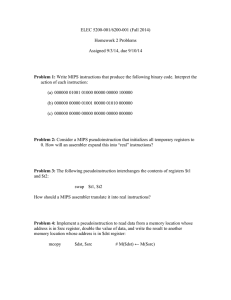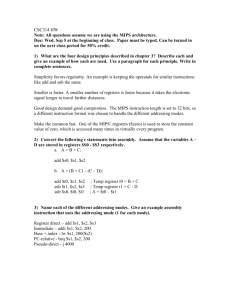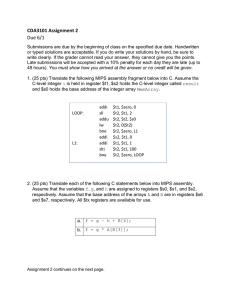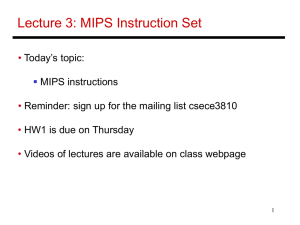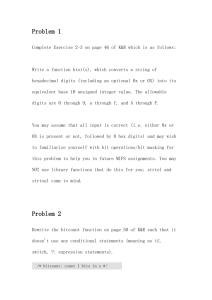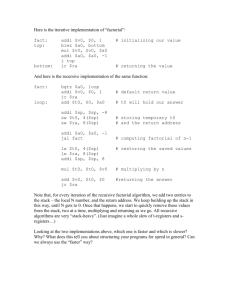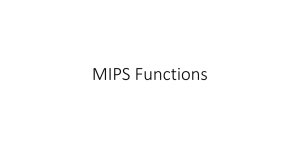3 - Computer Architecture
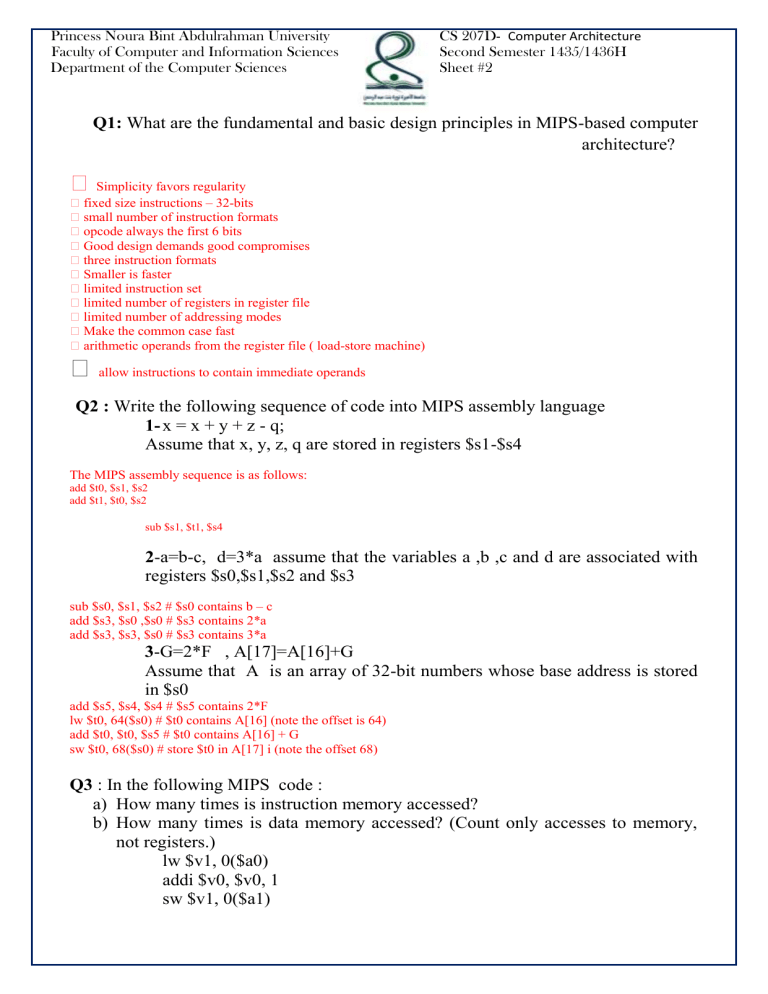
Princess Noura Bint Abdulrahman University
Faculty of Computer and Information Sciences
Department of the Computer Sciences
(
CS 207D- Computer Architecture
Second Semester 1435/1436H
Sheet #2
Q1: What are the fundamental and basic design principles in MIPS-based computer architecture?
�
Simplicity favors regularity
� fixed size instructions – 32-bits
� small number of instruction formats
� opcode always the first 6 bits
� Good design demands good compromises
� three instruction formats
� Smaller is faster
� limited instruction set
� limited number of registers in register file
� limited number of addressing modes
� Make the common case fast
� arithmetic operands from the register file ( load-store machine)
� allow instructions to contain immediate operands
Q2 : Write the following sequence of code into MIPS assembly language
1x = x + y + z - q;
Assume that x, y, z, q are stored in registers $s1-$s4
The MIPS assembly sequence is as follows: add $t0, $s1, $s2 add $t1, $t0, $s2 sub $s1, $t1, $s4
2 -a=b-c, d=3*a assume that the variables a ,b ,c and d are associated with registers $s0,$s1,$s2 and $s3 sub $s0, $s1, $s2 # $s0 contains b – c add $s3, $s0 ,$s0 # $s3 contains 2*a add $s3, $s3, $s0 # $s3 contains 3*a
3 -G=2*F , A[17]=A[16]+G
Assume that A is an array of 32-bit numbers whose base address is stored in $s0 add $s5, $s4, $s4 # $s5 contains 2*F lw $t0, 64($s0) # $t0 contains A[16] (note the offset is 64) add $t0, $t0, $s5 # $t0 contains A[16] + G sw $t0, 68($s0) # store $t0 in A[17] i (note the offset 68)
Q3 : In the following MIPS code : a) How many times is instruction memory accessed? b) How many times is data memory accessed? (Count only accesses to memory, not registers.) lw $v1, 0($a0) addi $v0, $v0, 1 sw $v1, 0($a1)
addi $a0, $a0, 1
The instruction memory is accessed four times (as there are four instructions) and the data memory is accessed twice (once for the lw instruction and another time for the sw instruction).
Q4 : Use the register and memory values in the table below for the next questions:
Assume a 32-bit machine. Assume each of the following questions starts from the table values; that is, DO NOT use value changes from one question as propagating into future parts of the questions a) What values will be in R1 and R3 after this instruction is executed:
load R3, 12(R1)
After load R3, 12(R1) :
R3 = 16 and R1 = 12 b) What values will be in the registers after this instruction is executed: addi R2, R3, #16
After a ddi R2, R3, 16 :
R2 = 16 and R3 = 20 c) Give the values of R1, R2, and R3 after this instruction: add R3, R2, R1
After add R3, R2, R1 :
R1 = 12, R2 = 16 and R3 = 20


